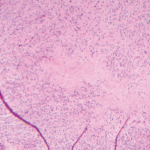Treatment
Dr. Gershwin compared developing CVID therapies with plugging a leak in a dike: Plug one leak and other leaks may emerge as a result.
“The immune system is very smart. As we know from lupus and the failure of multiple drugs that seemed to have worked in mice; as soon as you put them in a human, you block the pathway you intended to block, but the promiscuous autoimmune response finds another way around that. Then you wind up with autoimmunity through a different route,” he said. Physicians must educate patients so they can quickly seek care for high fevers and other signs of serious infection.
About 80% of patients with CVID have defects in multiple genes, and the long list of culprits includes NFKB1, TNFRSF7 (CD27), PIK3R1 and CD19. As the cost of gene sequencing comes down, physicians may be able to detect these defects quickly and early in life. Dr. Gershwin said, “I believe that there will come a time in America that when a child is born, they’ll get a Social Security number and also an email address, a cell phone number, and get their DNA sequenced.”
In a small number of CVID patients who survived bone marrow or stem cell transplantation, 50% were cured of their immunodeficiencies, while the other half still had various forms of immunodeficiency, said Dr. Gershwin. This finding suggests contributing factors to CVID’s origin may lie outside the hematopoietic system.
Epigenetics may offer clues about loss of tolerance in CVID. In one study, DNA methylation patterns in monozygotic twins were discordant for CVID.
“We do know that as those B cells start to mature, the methylation on those B cells remains hyper compared with normal individuals. There is some inherent defect in methylation status of patients with a common variable,” said Dr. Gershwin.
First-line treatment for CVID is lifelong immunoglobulin replacement, either subcutaneous or intravenous. The most common complications are immune thrombocytopenia and autoimmune hemolytic anemia. Treatments for CVID patients with autoimmunity include an array of immunosuppressants, including biologics.
IPEX
Another primary immune deficiency that may overlap with autoimmune disease is IPEX, which stands for immune deficiency, polyendocrinopathy, enteropathy, X-linked inheritance.4 IPEX, as in a number of other primary immunodeficiencies, is caused by defects on the X chromosome.
IPEX is caused by a defective FOXP3 transcription factor gene, which leads to a reduction in T regulatory cells, which then leads to immune dysregulation and loss of tolerance. Children with IPEX will die if they don’t have bone marrow transplants, said Dr. Gershwin.
T regulatory cells express FOXP3, which is critical in the transfer of immune tolerance, especially self-tolerance. Also, a related primary immune-deficiency, IPEX-like disease is found in females who have defective T regulatory cells caused by mutations in the IL2r (CD25) or signal transducer and activator of transcription (STAT) genes.
The effect of individual IPEX mutations on FOXP3 expression and function is variable, said Dr. Gershwin. “Any mutation of the functional area of the molecule has implications downstream. And this is best illustrated by IPEX: 60 unique mutations have been recorded of the FOXP3 gene. The [effect] of these mutations on the individual is like a crapshoot. It’s not always predictable,” he said.
IPEX disease severity and symptoms may vary considerably between even two patients with the same gene mutation, which suggests severity may be modulated by other disease-modifying genes that affect T regulatory cell function, as well as variability in the T cell receptor repertoire, the major histocompatibility complex haplotype or epigenetic and environmental factors.
Patients with IPEX have enteropathy that usually presents as intractable diarrhea. Because of defects in their T regulatory cell function, these patients have no control of complex gut immune components.
“If you don’t have FOXP3, you won’t have normal thymic selection,” said Dr. Gershwin. “Thymic selection, the forbidden clone, is the key to understanding how loss of tolerance takes place at least in some cases.”
Without functional FOXP3 and with impaired T regulatory cells, these patients’ checkpoints for self-immune education are disrupted. Often, patients with IPEX have type 1 diabetes and thyroid-associated immune disorders that may be diagnosed shortly after birth. T regulatory cells also play a role in controlling skin lesions. IPEX patients may present with atopic dermatitis and psoriasis, as well as skin rashes that are reactions to food allergies, which are common. They often have prolonged elevated IgE levels.
Immunosuppressants may be used to control IPEX symptoms, but hematopoietic stem cell transplantation, which requires a donor match, is the only effective treatment for the underlying disease.
In the future, research may point to ways to diagnose patients with primary immune deficiencies and autoimmunity earlier and improve first-line therapy, said Dr. Gershwin.
“Obviously, early diagnosis helps patients: It helps them prevent infection and helps in their bronchiectasis,” he said. “We may have more effective immunoglobulin treatment, maybe with longer half-life or more functionality. And of course, if we ever really knew the exact link, we [might] be able to have a bull’s eye-specific focus on how to treat those aspects of autoantibodies in autoimmune disease before they happen in patients with immune deficiency.”

